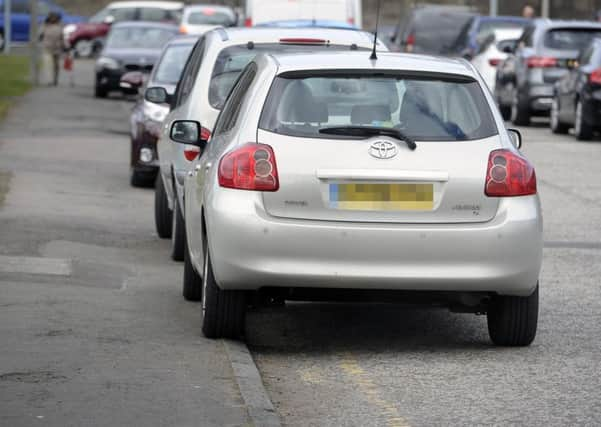Why parking tax isn’t real solution to air pollution – Christine Jardine


It is one of the most precious commodities we have and it is under threat. Clean air.
Many of you will already know that this is something of a crusade for me.
Advertisement
Hide AdAdvertisement
Hide AdMy mother’s name is one of those on a memorial in Clydebank to those who have died as a result of the air that they breathed. That air contained asbestos dust.
We lived down wind of both a shipyard and an asbestos factory when I was a child.
Both are gone but, almost half a century later on the other side of the country, I now find myself living at the centre of another constant battle to breathe air that is healthy.
Or at least not as unhealthy as it is at the moment.
My constituency – Edinburgh West – contains two of the three most polluted roads in Scotland: St John’s Road and Queensferry Road.
And this week two completely unrelated issues have come together to bring that issue back into sharp focus.
First there was the confirmation from Friends of the Earth that those two thoroughfares had kept their unenviable places in Scotland’s chart of polluted roads.
And that was followed by the admission that the Scottish Government had done no preparation on the proposal for a workplace parking levy.
A central plank of the budget settlement and the analysis is non-existent, the parameters are unclear and the consultation didn’t happen. To say I am disappointed is to put it mildly.
Advertisement
Hide AdAdvertisement
Hide AdMy colleagues in the Scottish Liberal Democrat group at Holyrood did not support it. I know not everyone agrees with them. But I do.
In Edinburgh West, my constituents have been calling for action for longer than it is probably polite for me to remind both the council and the Scottish Government.
But they, like everyone else in the city, need whatever plan is implemented to be coherent, thought through with clear parameters and an effective consultation which takes into account the views of those who live with the problem every day.
To date those plans which have emerged for cleaning up the air that we breathe seem often not to take full account of the collateral impact on our streets.
For example, a workplace parking levy. Yes, I can see where that principle makes perfect sense. But how will it operate?
How will you ensure that it does actually discourage people from using their cars and doesn’t instead just encourage them to drive as far as residential areas already facing parking problems?
And what about people who live in rural areas and do not have sufficient public transport options to allow them to leave their car at home or a park-and-ride centre?
There is a real problem, real congestion, real pollution. But it needs a real solution, not a dubious proposal that sounds like something pulled together on the back of a car park ticket.
Advertisement
Hide AdAdvertisement
Hide AdIn the homes around those chart-topping polluted roads in my constituency – St John’s Road and Queensferry Road – patience with the lack of progress on cleaning up the air they and their children breathe is wearing thin.
They themselves have made enormous efforts to come up with ideas and to talk to those who can make a difference.
Just recently myself and my MSP colleague Alex Cole-Hamilton heard an interesting proposal from local cyclists on how traffic could be filtered away from residential streets.
And before Christmas, Corstorphine Climate Action hosted a public meeting to discuss council proposals for low-emission zones in the city.
And all of this discussion is taking place against a background of proposals to build thousands of houses in the west of the city, putting an increasing pressure on our infrastructure and more traffic on the roads.
At the end of this month, the council’s transport committee will look at several papers which will have a direct bearing on how this affects residents in Edinburgh West.
‘Transforming our Places – Connecting Our City’ will look at potential pedestrianisation of the city centre and low-emission zones.
At the same time, the councillors will consider a related analysis of a parking survey of Corstorphine residents which had the biggest response to any online survey of its kind that the council has carried out.
Advertisement
Hide AdAdvertisement
Hide AdAt that meeting, they will hear from a delegation of the Community Council who will express the overwhelming frustration that residents feel about the lack of progress on the issue.
I have also been running a campaign to reflect the concern that so many of my constituents have brought to me about this issue and submitted the concerns residents have brought to me to the council.
I appreciate the councillors have a difficult role at the moment, and they are just as aware as I am of the public concern.
But what residents need from them is progress.
Hopefully they will do better than their colleagues in the Scottish Government.
